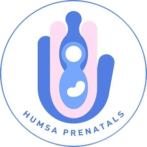Should you Swaddle or not swaddle your Newborn baby?
This blog post discusses the practice of Swaddling vs. Non–swaddling in babies and tries to look at the research that is available on this issue so that parents or caregivers could make an informed and educated choice towards a zero risk for the newborn baby.

Swaddling is a traditional practice that dates to Ancient Rome and Greece. In fact, it was one of the first methods of childcare that was developed to calm a baby.
This blog post discusses the practice of Swaddling vs. Non–swaddling in babies and tries to look at the research that is available on this issue so that parents or caregivers could make an informed and educated choice.
The research includes the differing views of Professionals in the field such as Dr. Harvey Karp, M.D., Landro, Thach, and Nancy Mohrbacher (IBCLC).
A friend of mine said that his baby liked being swaddled as it made her feel secure and kept her calm and comfortable. The child feels like being in the mother’s womb when they are swaddled early post-partum.
While examining the advantages and disadvantages of swaddling and non–swaddling, this post touches upon serious issues such as:
- Sudden Infant death syndrome (SIDS),
- Respiratory problems
- Hip dysplasia
- Over Heating
- Abuse-related disorders such as Shaken Baby Syndrome (SBS) in relation to the baby’s incessant crying
This blog post also discusses the effects of swaddling or non–swaddling on: breastfeeding outcomes
From these explorations and research, the conclusion can be arrived at, that used incorrectly both practices – Both swaddling and non–swaddling, could lead to harmful consequences.
However, with safety precautions in place, these techniques have their advantages which would help bring comfort to both babies and parents. Read on to find out more.
To Swaddle or Not to Swaddle
The debate about the advantages and disadvantages of non–swaddling infants and babies is important to parents who have questions about the practices. They may have heard conflicting information about the methods of practice and may not know which course of action to take.
Some examples of conflicting information are:
- Of Karp’s 5 ‘S’s, Swaddling is one of the methods used to calm down the baby.
- The National Resource Center on Child Health and Safety, a Colorado–based organization, believes that swaddling increases the risk of serious health outcomes.
So the question is, do I swaddle or not swaddle my baby?

Based on some qualitative research and in the hope of helping parents and caregivers in deciding as to which practice is the best for their baby, this blog attempts to present the advantages and disadvantages of both swaddling and non–swaddling based on three topics:
- Preventing Sudden Infant Death Syndrome (SIDS)
- Calming down the baby
- Physical and Mental Risks
Sudden Infant Death Syndrome–SIDS
Is there a way to prevent SIDS with swaddling?
The risk of SIDS is decreased when swaddled in a back lying position. Landro quotes research that putting babies on their backs to sleep decreases the risk, and hence SIDS rates have declined by more than 50% since 1999.
Thach states that a swaddled infant can’t crawl into dangerous asphyxiating environments and can’t pull bedding over their heads, which are both risk factors for SIDS.
Landro’s research compared 22 babies who died of SIDS to 213 babies who did not die. The study found that:
The risk of SIDS is lower when swaddled in a back-lying position.
There is an increased risk of SIDS when swaddled in a face-down position.
- Babies who are swaddled AND laid face down to sleep, were 12 times more at risk for SIDS than babies who were lying face- up.
- Babies who were laid face down and not swaddled were 3 times more at risk.
Why is a swaddled baby at greater risk when lying in a face-down position?
It’s difficult to lift and turn the head in a face-down position and this could cause death or serious injury to an infant. In a swaddle, the arms stay restrained at the baby’s side rather than positioned beside the infant’s head, and this could make it very dangerous if the baby is in a face-down position. It’s just common sense.
What are the disadvantages of non–swaddling concerning SIDS?

Crib blankets – A hazard.
It is possible that non–swaddling will encourage the use of loose blankets which can be hazardous.
The “Safe to Sleep” program sponsored by the National Institute of Child Health and Human Development includes warnings against crib blankets that are loose.
While speaking of the dangers of crib blankets, Michael Goodstein, a member of the American Academy of Pediatrics (AAP) task force on SIDS, and a Neonatologist at York Hospital in York, Pa., states,
“These infant deaths are preventable accidents that remain a silent epidemic.” – Michael Goodstein (AAP)
Calming the Baby Down
Advantages of swaddling in calming down a baby:
Swaddling can calm and settle a crying baby. According to Best Start, it is a way of wrapping your baby to make them feel safe and secure.
According to Dr. Harvey Karp, swaddling calms a crying baby, and it is one of the five ‘S’s which are tools that he teaches to parents to help calm down a baby.
Swaddling, “naturally makes the baby feel back home…babies are packaged like that in the uterus.” – Harvey Karp (2012)
A study conducted in 2007 by researchers from Wilhelmina Children’s Hospital and the University Medical Center Ulbrecht, monitored 398 babies from birth until 3 months of age, with one group being swaddled and the other not swaddled.
According to the study, swaddled children (1-7 weeks old) are more likely to be calm and less likely to cry than those who are not swaddled.
Advantages of non–swaddling in calming down a baby:

More Skin–to–skin bonding with parents
Skin–to–skin contact may lower stress levels, create a positive experience for the infant and the mother, and help to facilitate breastfeeding.
Best Baby Warmer
According to the International Board–Certified Lactation Consultant (IBCLC) Nancy Mohrbacher, non–swaddling encourages more skin–to skin contact between baby and mother, which is the “best baby warmer.”
Non Swaddling “Best baby warmer” – Nancy Mohrbacher (IBCLC)
Physical and Mental Risks of swaddling:
Risk of weight loss
IBCLC Mohrbacher believes that swaddling prevents waving of arms which impedes the breastfeeding impulse in babies, and it could make latching on to the breast difficult.
Mohrbacher says that a delay in the first breastfeeding, a decrease in mother’s milk intake, less effective suckling, and greater infant weight loss are all linked to routine swaddles of babies during the first few days of life.
The IBC Lactation Consultant stresses that:
- It is important to understand the role of inborn feeding reflexes such as “arm cycling” in helping babies to successfully breastfeed.
- One study of preterm babies showed that babies that were swaddled could receive less touch which could affect the baby’s growth.
- Babies need to be fed frequently to maintain a healthy weight in the early days after birth. If swaddled babies wake less and sleep longer, there could be negative repercussions.

Physical and mental risks of non-swaddling:
Risk of PPMD and Abuse
A 2005 Ohio State study found a correlation between the level of fatigue mothers experienced two weeks after birth and their risk for depression two weeks later.
According to the Albert Einstein School of Medicine in New York, there is a connection between abuse and Shaken Baby Syndrome.
To learn more about how to keep your baby safe, how to establish safe sleeping habits please check out Humsa Prenatals’
How to Care for your Newborn Webinar
Continue Reading…
Advantages of swaddling for Baby’s Physical and Mental Health:
Self–regulation
Research done by Myer et.al found that when swaddled, Preterm infants have shown:
- Improved neuromuscular development
- Less physiologic distress
- More self-regulation
- Better motor organization
- More self–regulatory ability
- Crying is significantly reduced
- Experience balance
- Feel more secure
- Feel comforted during painful procedures
- Swaddling is of help with cerebral defects and/or withdrawal symptoms
- Improved sleep leads to reduction of abuse and SIDS

Hip Dysplasia
When babies are swaddled tightly, it does not allow their legs to bend and flex, this creates a greater risk of hip dysplasia, sometimes called “developmental dysplasia or the displacement of hips.”
Restricted movement
The International Hip Dysplasia Institute recommends that babies’ legs should be able to bend up and out at the hips and not tightly wrapped straight down and pressed together.
Breathing
Non–swaddling helps in easy breathing and allows the baby to cough if needed. In warmer environments, non–swaddling may help babies not get overheated and may prevent SIDS.
Yurdakok, et al. state a study of 186 babies in Turkey and China, which found that babies who were swaddled in their first three months, were four times more likely to develop pneumonia and other respiratory infections than babies who were not swaddled.
Thach said that when swaddled, cough might be compromised because coughing must be preceded by an increase in lung volume through inhalation.
Over-heating
When the surrounding temperature is warm, there is a risk of overheating in swaddled babies which in rare cases could be fatal.
Disadvantages of non–swaddling concerning movement:
Sleep–disruption and crying
Even though fetuses are used to having their arms up in the uterus and may exhibit the same when they are out of the womb, the startle or Moro reflex can wake a baby up who is sleeping.

A baby’s flailing arms can disrupt his/her sleep and make them fussy and irritable, especially if the baby is colicky.
A study at Brown University found that 45 percent of parents of babies who cried and fussed were moderate to severely depressed.
Recommendations by Humsa Prenatals:
If you choose to swaddle your baby the following simple precautions would go a long way to keeping your child safe.
- NEVER put a swaddled baby in a FACE DOWN position
- Please do not wrap the baby tightly
- Check to see if the baby is breathing normally
- Allow room for the movement of the legs
- Make sure the swaddling does not result in overheating
- Frequently arouse the baby for feeding especially during the early months
- Remember to un-swaddle the babies now and then to allow for touch and skin–to skin bonding with parents.
These precautions would help in:
- Calming children down
- Establishing sleep regulation
- And preventing SIDS
For un–swaddled babies, make sure that:
- There are no loose blankets in the crib.
- Buying a sleep sac could be an option for those who live in places with colder temperatures
- Take the help and support of others at hand, when you and your partner are over exhausted

This would help reduce the risk of SIDS, PPMD, and abuse as is seen in cases of Shaken Baby Syndrome (SBS).
To learn more about how to keep your baby safe, how to establish safe sleeping habits please check out Humsa Prenatals’s
How to Care for your Newborn Webinar
Conclusion
Both swaddling and non–swaddling could lead to harmful consequences when practiced incorrectly and when practiced with the safety of the child in mind, they both have the advantage of enhancing the early years of the baby. Making educated choices will make the early months of a baby better and more enjoyable for parents and caregivers and the babies too. All the best!

Childbirth Educator
Make the best of your pregnancy Enroll now in Humsa Prenatals’s
Self-Paced All-in-one Pregnancy, Labor, Delivery, Newborn care and Breast feeding course
